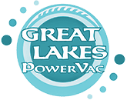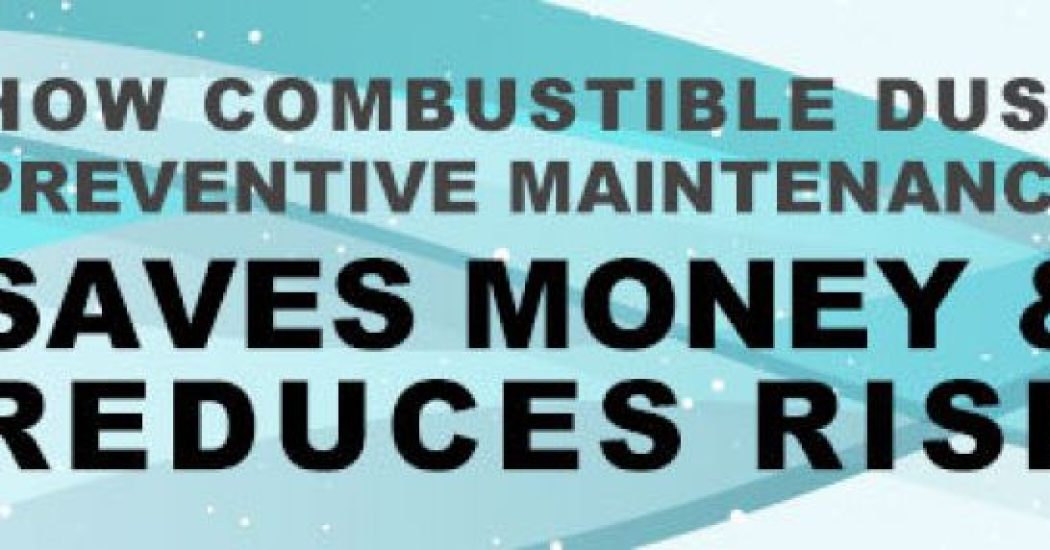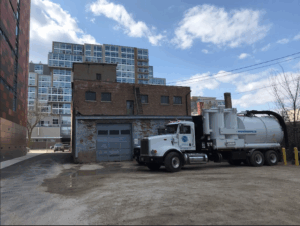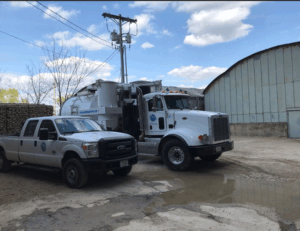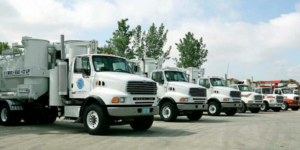REDUCE RISK AND COST, IMPROVE SAFETY AND PRODUCTIVITY
When your car reaches 3,000 miles, you get an oil change. You proactively keep up on the maintenance on your factory’s machines. You follow the maintenance schedule for your facility’s forklift. The same level of proactive preventive maintenance should apply to keeping up with the dust in your building.
Some facility owners misguidedly view preventive maintenance as an optional cost, prompting them to stretch out their cleaning intervals much longer than they should. This approach not only raises the risk level related to combustible dusts, but can also lead to a loss of productivity and increased overall cleaning costs.
“Ongoing maintenance helps keep a facility clean, and that helps keep a facility safe and productive,” says Rob Towey, operations manager for Great Lakes Power Vac a Wisconsin-based provider of industrial cleaning and environmental services since 2004. “If you don’t have combustible dust covering the surfaces in the facility, there is less of chance for conflagration. Regular cleaning is also more cost-effective for the facility. It is easier and less time-consuming to vacuum lower levels of dust. If you only clean a facility every four or five years, the dust removal crew could end up dealing with massive buildups that can actually take more time and cost more money to remove.”
More regular cleanings also provide opportunities to discover problem areas. Because cleaning crews are onsite more often, they are more regularly inspecting things like dust collection equipment and ductwork, which can often be the source of fugitive dust. This increases the likelihood of identifying a problem area early on, which ultimately helps slow the ongoing accumulation of dust. Slower accumulation could eventually lead to longer maintenance intervals, which could help the facility save money over time.
Another benefit of more frequent cleaning relates to employee job satisfaction. “A cleaner facility is a better facility to work in,” Towey says. “That helps attract and retain employees.”
“The facility’s customers can come to appreciate this, too,” Dan Bemi, general manager for Great Lakes Power Vac, adds. “If a client ever comes in to tour a facility, what will they think if that facility is a dusty mess? They’ll probably wonder if some of that dust is getting into whatever product is being manufactured for them. They might even have it in the back of their minds that the facility could end up getting shut down, or worse yet, suffer an explosion and be forced out of operation.”
All of these risks can easily be managed with a simple, cost-effective preventive maintenance program.
SMART SCHEDULING THAT SPARES PRODUCTION
One challenge preventive maintenance can present is disruption to a facility’s operations. It’s important for a facility’s management to work closely with their dust removal provider to plan a smart cleaning schedule.
In the planning stage of a dust removal project, Towey says GLPV works with the customer to design a plan that best works for the customer’s production schedule. Working while a facility is still in operation is entirely possible, and quite common, Towey notes. If the logistics of the facility’s operations allows for the service provider to clean while production continues, this may be the most cost-effective option. Often, however, it is not feasible or efficient to clean while production is ongoing.
“Having hoses running across aisleways can be disruptive to forklift and foot traffic. It is also not always prudent to clean areas above where people are working,” Towey says.
Because of these and other challenges what may be disruptive to a company’s operations, a service provider will often coordinate with the customer to perform the cleaning during off-hours. For example, dust removal services could be scheduled on weekends when the facility is not operating, or during periods of planned shutdowns. This allows the service provider unfettered access to the areas that need to be cleaned, which is often more efficient for both parties.
Managing the timing of a cleaning often comes down to strong communication between the facility and the dust removal company.
Professional Guidance
When the facility and service provider begin planning their preventive maintenance schedule, they should look to the National Fire Protection Association (NFPA) for standards and guidance to help manage combustible dust explosion risks. Part of that guidance includes the completion of a dust hazard analysis (DHA) every five years, with the first one being completed by September 7, 2020. Led by someone with expertise in combustible dust management, a DHA seeks to identify dust hazards within the facility, evaluate existing safeguards, and recommend where additional safeguards should be implemented.
One essential safeguard is a customized preventive maintenance plan.
“Completing a dust hazard analysis is the first step,” says Dan Bemi. “From there it is important for industrial facilities to implement the necessary processes and safeguards to monitor and manage dust — and then track and maintain their effectiveness.”
TIPS FOR MONITORING DUST BUILDUP
As a general rule, an industrial facility does not want more than a 1/32-inch layer of dust on a surface. If that dust were to get blown around, it could create an ignitable dust cloud. It is important for facilities to continually monitor dust accumulations, and call a reputable dust removal company before that accumulation reaches a potentially dangerous level.
After a service provider comes in and rids the facility of combustible dust, the process of monitoring and prevention starts all over again.
“After one of our crews has completed a thorough cleaning of a facility, we work with the client to identify areas of the facility that had the greatest amounts of dust,” Bemi says. “Then we can establish a dust monitoring procedure for those areas. It is important to continue monitoring these higher-risk areas on a regular basis because they are going to need cleaning the most frequently. But once our crew leaves, it is up to the facility staff to continue the monitoring.”
A simple, but effective method for monitoring dust is to set out trays or shallow pans to catch dust in various parts of the facility, particularly the higher-risk areas. Employees of the facility should regularly monitor these trays, along with overhead structures such as rafters, ductwork and the tops of equipment. This will help establish a baseline estimate as to how long it takes for an unacceptable level of dust to accumulate. That estimate can help determine a proper preventive maintenance schedule for different parts of the facility.
It is also important to search for the root causes of rapid dust accumulation, such as leaky ductwork or equipment.
“Sometimes the majority of the dust making its way into a facility is coming from a single piece of equipment,” Bemi points out. “An effective preventive maintenance measure could be to construct some kind of enclosure around that equipment to help contain the dust. Installing a localized dust collection system in a higher-risk area is also an effective measure.”
Finding these root causes of dust accumulations is only one benefit from implementing a preventive maintenance plan. When facilities and dust removal companies work together to develop a customized plan, preventive maintenance is an important safeguard that can help control costs, drive productivity, increase product quality, and reduce the safety risks of combustible dust.
